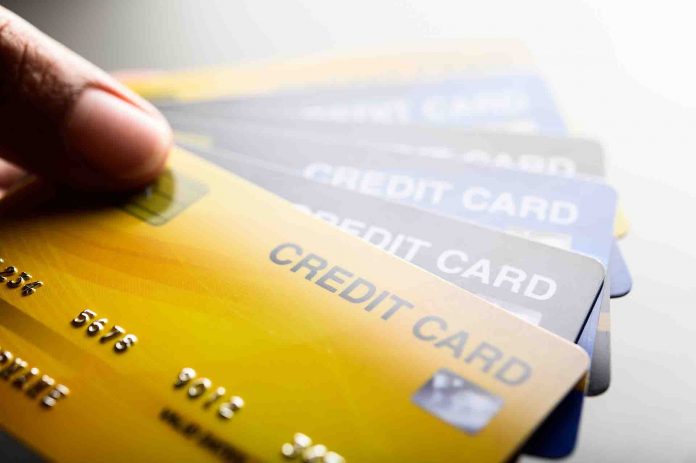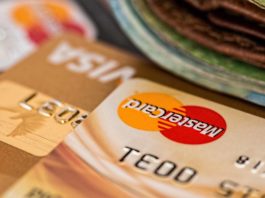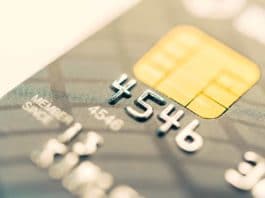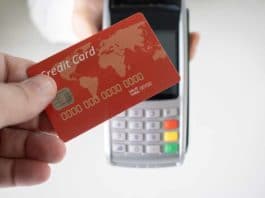A credit card is a card used to trade with the understanding that the cardholder has to pay back and the value of the items purchased and the fees and interests negotiated. A credit card works like a loan, enabling you to shop now and pay later.
Debit and credit cards can be valuable spending options, so it’s a good idea to know both the front and back features of your cards so you can make the most of them.
An adequately used credit card is one of the most effective financial payment tools available to customers of all ages.
What Are the Parts of a Debit or Credit Card?
Credit cards come with a maximum amount of money limit called a credit limit that can be used for a limited time. The credit upper limit is calculated by the credit ratings and reports, which the credit card company will check before the credit card application is approved by the credit cardholder.
The credit card company authorizes the cardholder to make purchases on his behalf with the promise of a refund later when the card is used to purchase goods or services.
Credit card companies will record the cardholder’s payment and apply it to the credit cardholder statement. It will then issue an invoice at the end of the billing period and measure all transactions made by the credit card holder, each payment’s cost, and the cumulative balance owed from these transactions.
Card issuers charge an interest fee on account balances that are not paid on or before the invoice’s due date. Interest increases over time as long as the outstanding balance continues, so additional interest is financially detrimental to cardholders.
Credit cards have different components, and cardholders must be familiar with each one:
Issuer Logo: The emblem of the bank issuing the card is located on the credit card’s front. Credit card payment network such as Visa and MasterCard processes card payments, although a supervisor such as Bank of America or Wells Fargo serves debit cardholders.
It is the bank that issues the credit card. To get the card, you apply to this bank and take advantage of the card’s features such as reward points and benefits.
Credit Card Name: The name of a particular credit card. Card names always begin with the bank’s name that issued the card, followed by the name of the card in question.
Credit Card Network: The credit card network and the service level associated with that account. The credit card network is responsible for card purchases. Visa, MasterCard, American Express, and Discover are examples of known credit card network companies.
Europay, MasterCard, and Visa (EMV) Chip: The EMV chip, which became widely available in the last decade, encrypts card data and stores it on a computer chip, making it impossible for fraudsters to steal card numbers. In addition to the magnetic stripe, the EMV chip is an alternative method of storing cardholder information. It is a more reliable and modern type of data storage that offers better fraud protection.
See Also: What You Need to Know About EMV and PCI Compliance
It is known as “Europay, Mastercard, Visa” EMV technology. There are two universal standards for EMV chip technology:
- Chip and Signature
- Chip and PIN
Chip and sign cards require your signature to complete a transaction. Chip and pin cards, on the other hand, operate in the same way as bank cards in that they depend on the PIN you make. Credit cards can feature a single chip or two chips at the same time.
Instead of pushing a chip-enabled card through the slot, you insert it into a slot in the reader, usually at the bottom, and hold the card there until prompted. The word “card dip” applies to this.
From early October 2015, all credit cards issued in the United States must have chips. Sellers who do not comply with the new requirements after October 2015 must supply the appropriate equipment; otherwise, they will be held liable for fraudulent credit card activities.
Magnetic Stripe: In addition to account information, credit cards have magnetic stripes that can be read by a number of monetary transaction devices.
Also known as the magic stripe, this black bar includes all of your account details. The magnetic strip is made up of millions of tiny magnetic particles. When you swipe the card into a card reader terminal, the reader reads the magnetic stripe for account information and processes the transaction.
If your card isn’t acceptable to an ATM or card reader, most likely the problem is one of the following:
- The magic stripe is too dusty or too drawn to read.
- A magnet has loosened and rendered the magical tape information non-functional.
If your card’s magic strip is not working, you should contact your card issuer to apply for a replacement. Therefore, there is usually no charge for having a replacement card.
CVV Security Code: The CVV security code is a fraud prevention tool used when making cardless transactions such as online purchases of a credit card. CVV codes are 3 digits on Visa, Mastercard, and Discover cards. It has 4 digits in Amex cards.
Your Name and Account Number: As on your credit card application, your name appears on the front or back of the card.
Credit Card Number: The credit card number or PAN is the number of identifiers associated with the particular card and located on the magnetic strip. Your number will contain information about the credit card network and card issuer when you swipe your card at a terminal or reader.
See Also: What do credit card numbers mean?
Credit card numbers are assigned by the American National Standards Institute and the International Organization for Standardization (ISO). Your card issuer assigns your account number, which can be up to seventeen digits long. Some cards have only seven numbers on them.
Account Opening Date: Indicates the opening year of the credit card account. Not all cards show the account opening date.
Credit Card Expiry Date: It is the expiration date of your card. It shows merchants the month, and year your credit card can be last used.
The credit card expiration date does not indicate that the credit account will be closed; rather, it shows that it is time to apply for a new card. The credit card issuer will automatically mail you a new card with a new expiration date, account number, and CVV code.
The reasons why cards have an expiration date are as follows:
- It is applied to put an end to your partnership with the card issuers.
- Credit cards break slowly due to normal wear and tear, destroying the magnetic stripe making it unreadable.
- It is a measure of protection from fraud and serves as an additional form of card authentication.
- It offers advanced security features or new designs for credit card issuers to replace old cards with new ones.
Customer Service Number: The card issuer provides a customer service number on the credit card’s back to handle issues and provide information on credit card usage and options. The contact number on the back of the card is the safest number that can be used for general customer service.
Signature Box: Credit cards have space for cardholders to sign their signatures. A signature box is another method of preventing fraud, but this measure rarely serves its purpose. The cardholder must sign the card here in order for it to be legally valid. This signature can be identical to that on a driver’s license or a signature given at the time of payment.
By comparing the signatures, you can see that the person using the card is the card owner. However, retailers can never search to see if there is a signature here, and they are much less likely to double-check the signature.
Hologram Security Feature: Hologram is a protection feature that aims to prevent the card from being physically copied. It’s made up of multiple layers of images taken from different angles, giving it a special sense of motion. Some images can also be hidden under specific layers. Multiple layers and hidden images make it difficult or impossible to copy the hologram with a scanner.
How Do Credit Card Payments Work?
To shop at a retailer, you usually insert the credit card into a card reader to read the security chip on the card. At an online retailer, you will be asked to enter the card number, expiration date, security code, and your name and billing address.
When you swipe your credit card to make a payment, the merchant’s credit card terminal checks with your credit card issuer to see if the card is valid and has adequate credit.
See Also: How To Store Credit Card Information
Your credit card issuer will send a message stating whether the transaction is confirmed or not. If the transaction is approved, you can continue with the purchase process. Otherwise, you may have reached your credit card limit, or your card may have been deactivated due to suspected fraudulent activity.
What if you are in the mall and pay using your Chase Visa credit card? The following process begins.
- Your credit card details will be submitted to the receiver bank, which is the bank of the retailer. Suppose the buying Bank is Wells Fargo. In this case, the bank must obtain payment authorization from the credit card network, Visa.
- This request is also routed through credit card issuer Chase to verify the number, credit limit, and CVV (security code).
- Chase either accepts or declines the transaction and sends the response to Visa and Wells Fargo.
- After Wells Fargo receives approval to agree to the payment, the issuer Chase blocks this amount on the account your loan is available to.
- The merchant receives the transaction and sends it along with the rest of the day’s transactions to Wells Fargo.
- Then the cleaning process begins. Wells Fargo passes the batch to Visa for processing.
- The Visa network will then send the transactions to Chase. Chase responds and sends the total of the payment to the Visa network.
- Visa instead charges from the less valid Wells Fargo. The retailer earns between $ 97 and $ 98 as a refund on your $ 100 purchase after a fee.
- Chase will send you an invoice for the purchase amount to avoid interest, and you pay the $ 100 in full and by the due date.
What are the Types of Credit Cards?
Credit cards come with special deals and rewards and come in a variety of styles:
- Balance Transfer Credit Card: It comes with a credit card for a balance transfer, a discounted interest rate, and a lower fee for credit card balance transfers.
- Rewards Credit Card: Rewards credit card provides a program such as airline tickets, hotel stays, and even cashback credits for items. Your rewards depend on the amount of credit cards you spend.
- Premium Credit Card: A luxury credit card provides advantages that traditional credit cards do not always offer. Such benefits include special events, concierge services, access to airport lounges, extra insurance coverage, and retail. Also, Premium Credit Cards come at a higher annual fee.
- A retail or store credit card may be used to pay for sales at the retail location associated with the credit card. They usually have a first-time buyer discount.
- Secured Credit Card: A secured credit card, often used by financially weaker Americans, allows the customer to deposit cash into the account’s balance before using it.




